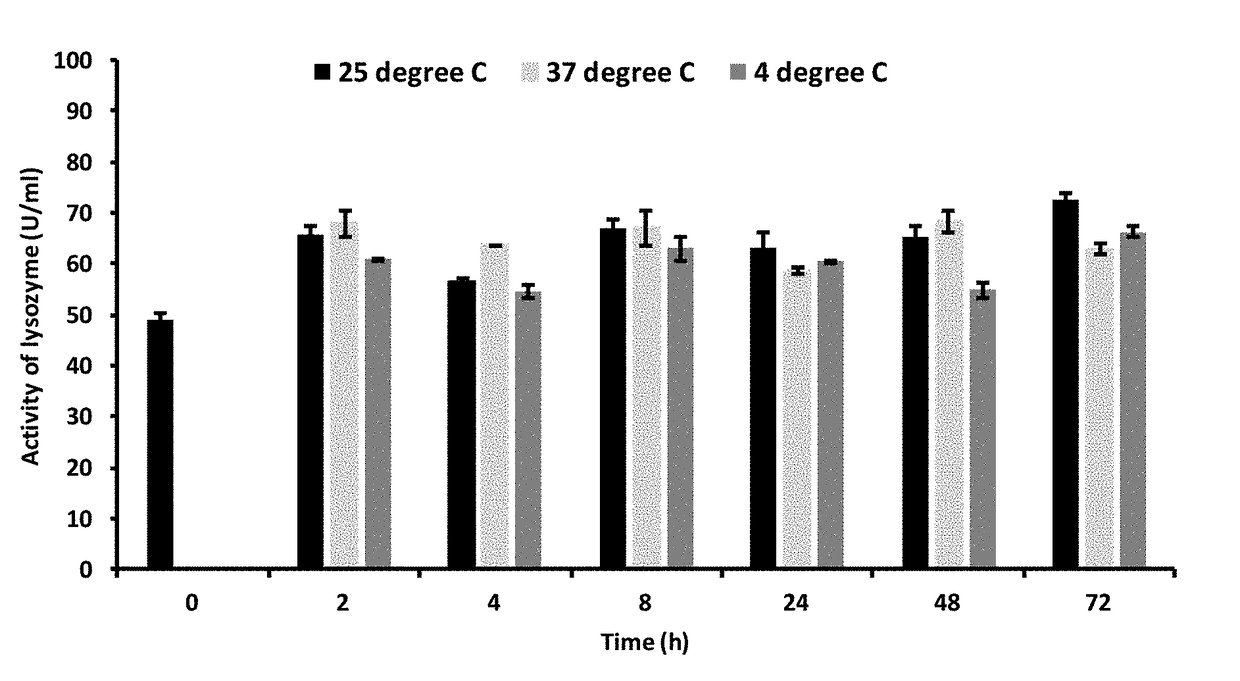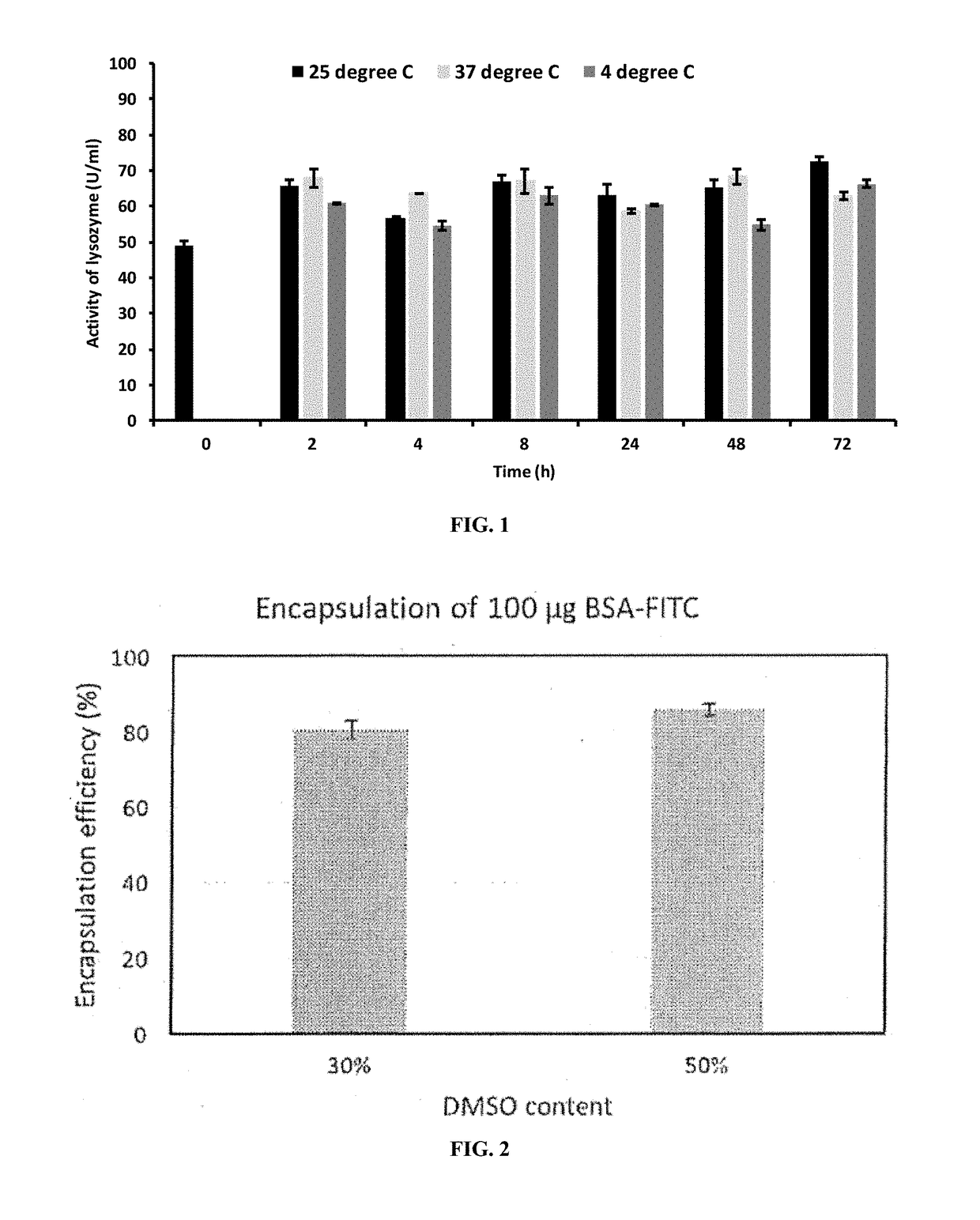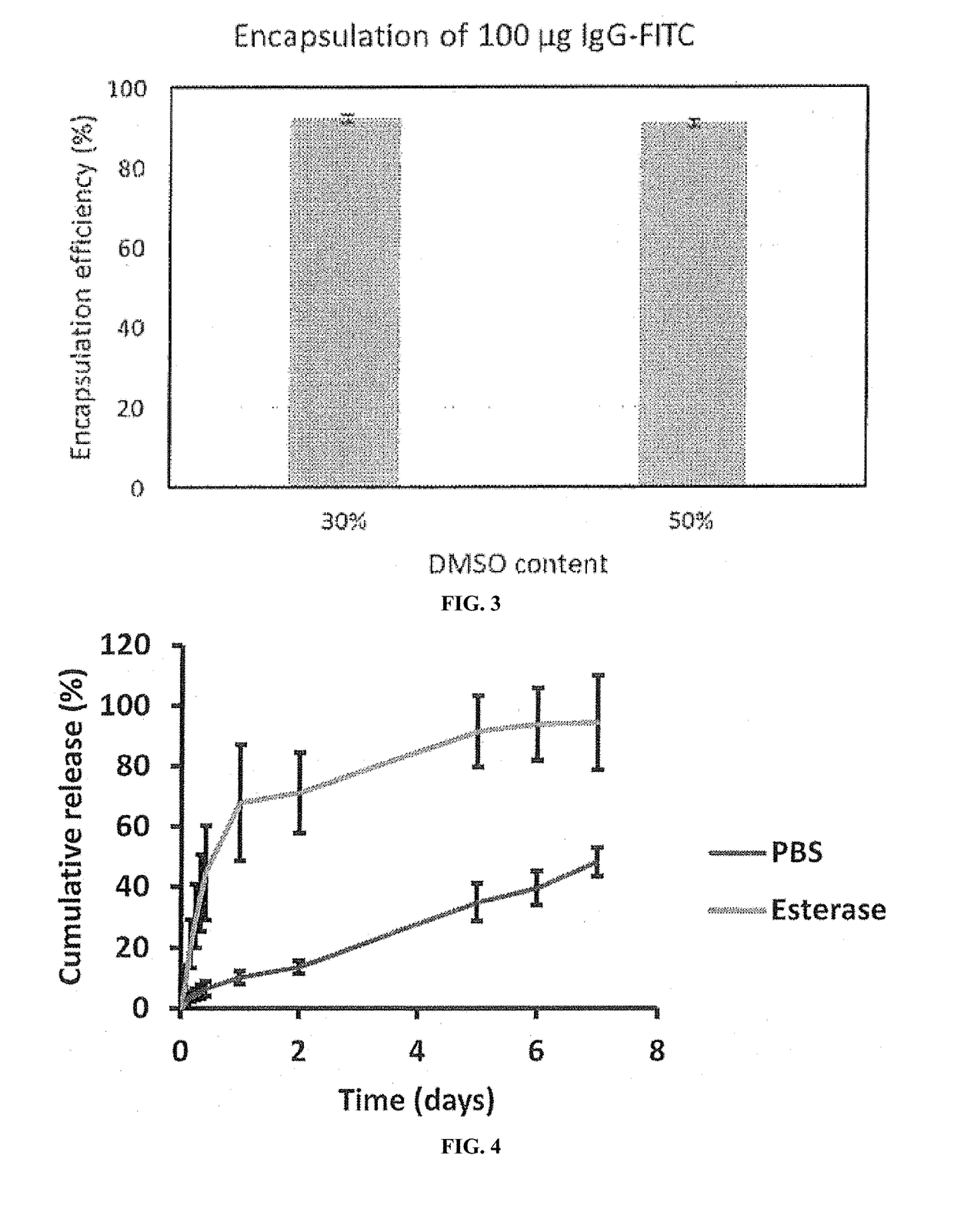Self-assembled gels for controlled delivery of biologics and labile agents
- Summary
- Abstract
- Description
- Claims
- Application Information
AI Technical Summary
Benefits of technology
Problems solved by technology
Method used
Image
Examples
example 1
Without Heating, a Threshold Amount of DMSO is Required for Ascorbyl Palmitate to Form Homogeneous Gel.
[0130]Methods
[0131]Ascorbyl palmitate was prepared with a total volume of 200 μL including a first organic solvent, DMSO, and a second solvent, ultrapure water, at 10 w / v %. The DMSO was at a volume percentage of 20%, 25%, 30%, 50% of the combined volume including DMSO and ultrapure water.
[0132]Results
[0133]The vials containing the samples were inverted for visual examination to determine if homogeneously gelled.
[0134]Ascorbyl palmitate in the solvent mixture with 20% DMSO formed precipitates, i.e., heterogeneous materials that was a mix of gelled regions (non-flowable) and non-gelled, liquid regions (flowable with some precipitates in there).
[0135]Ascorbyl palmitate in the solvent mixture with 25% DMSO, ascorbyl palmitate in the solvent mixture with 30% DMSO, and ascorbyl palmitate in the solvent mixture with 50% DMSO, all formed gel that did not flow when the vial was inverted. T...
example 2
Selective Amphiphiles Form Gels in a Two-Solvent Medium.
[0137]Methods
[0138]A GRAS amphiphile (ascorbyl palmitate, triglycerol monostearate TG18, sucrose stearate, sucrose palmitate, tetradecyl maltoside, or sorbitan monostearate) was added to the vial: for a final concentration of 10 w / v % or 6 w / v % in a total amount of 200 μL it liquid media including an organic solvent and ultrapure water.
[0139]60 μl of DMSO, dipropylene glycol, or propylene glycol was added to the vial. The vial was heated until dissolution of amphiphile; for amphiphiles that dissolved without heating, the heating step was omitted. The vial was allowed to cool to 37° C. in a 37° C. incubator; for amphiphiles that dissolved without heating, the cooling step could be omitted.
[0140]140 μl of ultrapure water without or with biologics was added, and the contents in the vial were immediately stirred to mix. The vial was later undisturbed on a flat surface for 1-2 hours.
[0141]Therefore the first solvent (DMSO, dipropyl...
example 3
Lysozymes or Amylase Encapsulated in Ascorbyl Palmitate Gels With DMSO-Water as the Medium Retained a High Encapsulation Efficiency and Activity Over Days.
[0160]Methods
[0161]50 mg ascorbyl palmitate (AP) was dissolved in 150 μL DMSO and heated. AP solution in DMSO was allowed to cool down to 37° C. 350 μL of 5 mg / mL lysozyme or amylase stock in water was added to the AP solution and mixed to make an overall 3.5 mg / mL lysozyme or amylase-loaded gel.
[0162]After gel was formed, fibers were produced by adding 2 ml water. The suspension was centrifuged at 10,000 rpm for 10 min and the pellet was resuspended in water to get lysozyme loaded particles. Encapsulation efficiency was determined using HPLC and activity of the enzyme in supernatant was determined using lysozyme or amylase activity kit.
[0163]Results
[0164]Lysozyme was encapsulated at an efficiency of 79.3%. The activity of lysozyme after encapsulation was 89%, as determined immediately after gel preparation.
[0165]Amylase was encap...
PUM
| Property | Measurement | Unit |
|---|---|---|
| Temperature | aaaaa | aaaaa |
| Temperature | aaaaa | aaaaa |
| Temperature | aaaaa | aaaaa |
Abstract
Description
Claims
Application Information
 Login to View More
Login to View More - R&D
- Intellectual Property
- Life Sciences
- Materials
- Tech Scout
- Unparalleled Data Quality
- Higher Quality Content
- 60% Fewer Hallucinations
Browse by: Latest US Patents, China's latest patents, Technical Efficacy Thesaurus, Application Domain, Technology Topic, Popular Technical Reports.
© 2025 PatSnap. All rights reserved.Legal|Privacy policy|Modern Slavery Act Transparency Statement|Sitemap|About US| Contact US: help@patsnap.com



